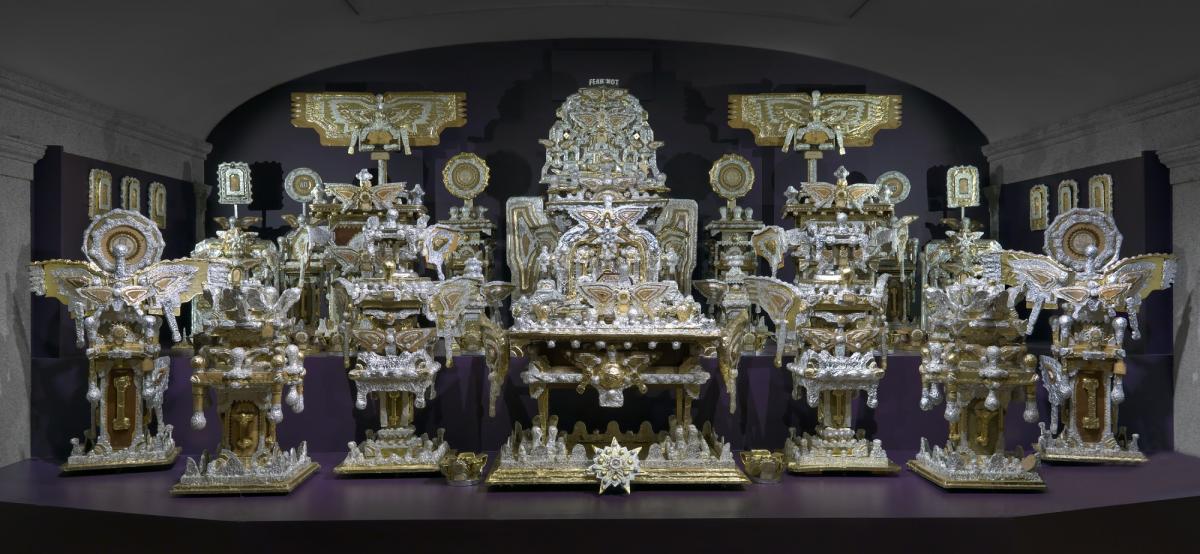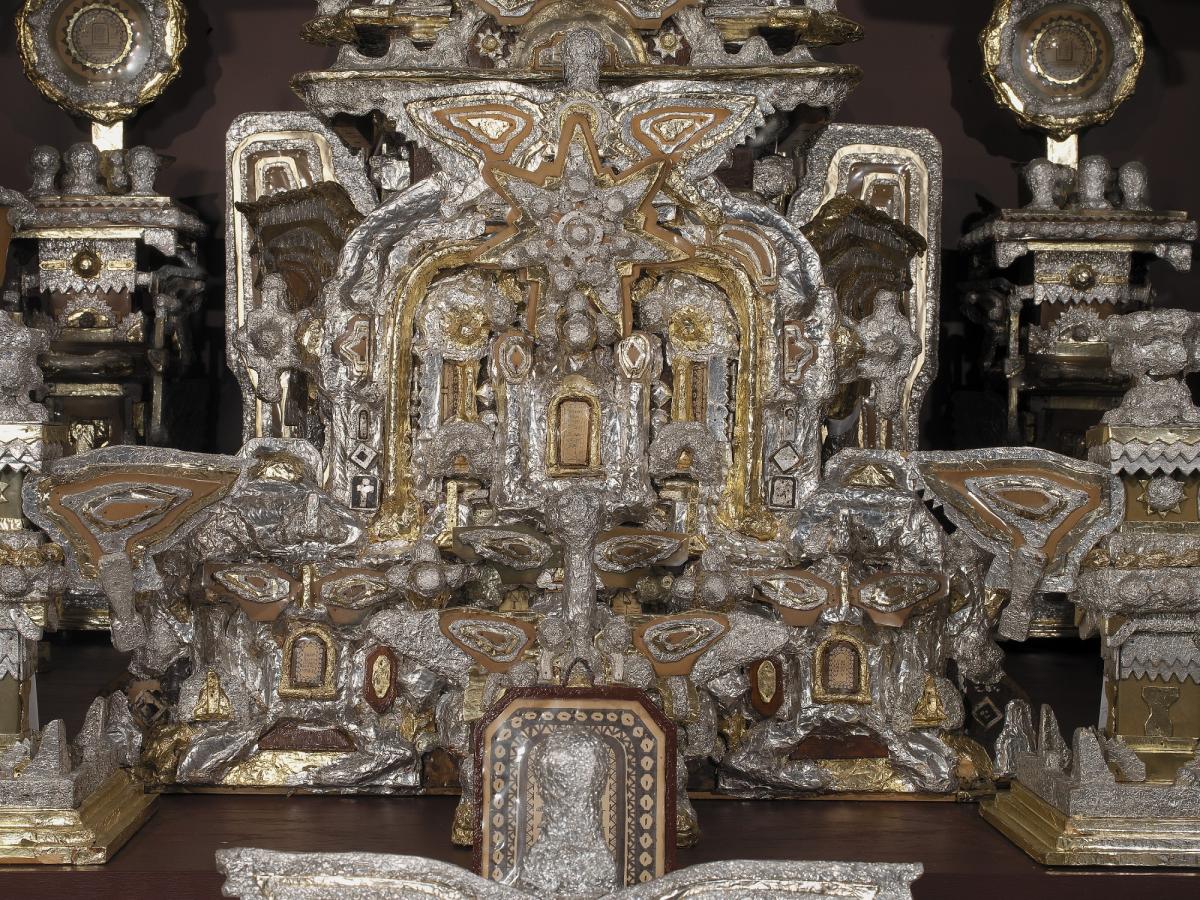
I’ve always felt drawn to James Hampton's The Throne of the Third Heaven of the Nations’ Millennium General Assembly, an iconic artwork in SAAM’s collection. Even without knowing much about it, I found myself repeatedly visiting the gallery and sitting on the bench in front of the installation and taking it all in. And there’s a lot to take in.
The piece is comprised of about 180 elements (of which 60 or so are currently on view) that Hampton put together himself, often covering each piece with silver and gold foil. He lived and worked in Washington, DC as a janitor in a federal office building. Many parts of The Throne are made from everyday things that had been discarded including sections of tables and chairs, vases and light bulbs. At the center of the piece are the words, “Fear Not.”
Leslie Umberger, curator of folk and self-taught art at SAAM, puts the work into context: “Hampton's masterpiece has become an enduring icon at SAAM. It's very human scale, there are crowns that look like they would fit right on your head or maybe that Hampton had worn. It's glimmering and resplendent and really beautiful. And it's also just profoundly humble, this amazing artwork that's made out of almost entirely discarded things just carefully covered and adorned and put together with such care. It's a very moving piece.”
Hampton spent about fourteen years assembling The Throne, basing it on a series of visions he had. Eventually, the work took on a life of its own, and he rented a carriage house near his home where he could work and assemble it. I wonder what it was like to see his creation unfold, glittering when a source of light hit one of the foil pieces.
The presentation in SAAM's galleries includes a few elements that Hampton likely did not regard as part of the altar itself, but were found near it, and that reveal his working methods: a chalkboard showing some of Hampton's sketches or working plans and a small book he kept, written primarily in an invented or "asemic" script, meaning it is unreadable or lacking specific semantic content. Hampton referred to himself as "Director, special projects for the state of eternity" as well as "Saint James," an echo of Saint John who was divinely instructed to record his vision of the second coming in a secret script in a small book.
Hampton had a vision that he brought to life but, sadly, died before he could complete it, let alone see it acquired by SAAM in 1970. “It rapidly became an audience favorite,” Umberger adds, “and it has rarely been off view since then.”
Learn more about this iconic artwork in the American Art Moments video below. Curator Leslie Umberger discusses its creation, its relevance today, and the lasting impact of James Hampton’s vision.



















